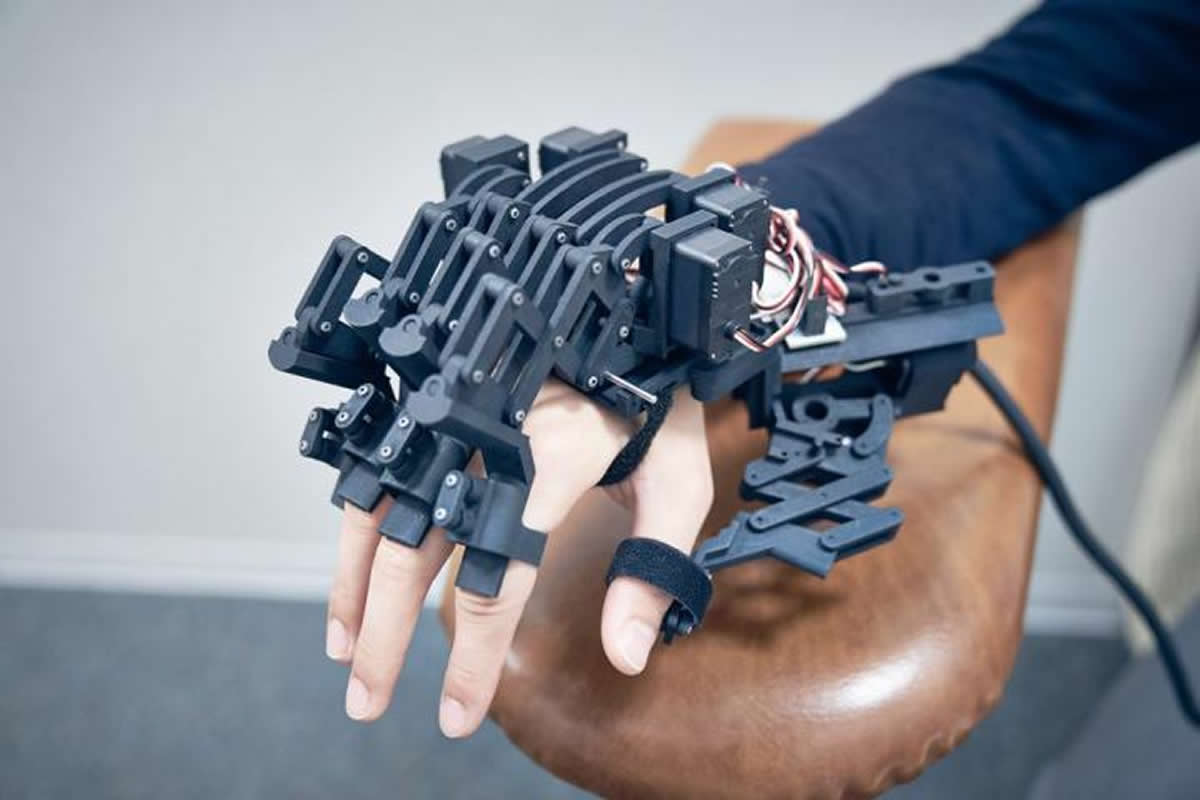Summary: Expert pianists have altered mechanisms by with tactile and proprioceptive sensations suppress activity in the primary motor cortex.
Source: Japan Science and Technology Agency
In Japan Science and Technology Agency’s Strategic Basic Research Programs, Dr. Masato Hirano of Sony Computer Science Laboratories and his colleagues discovered a sensorimotor function integration mechanism that enables the skillful fingering of pianists.
The tactile sensation signaled by the skin and the proprioceptive sensation (deep sensation) signaled by muscles and joints are collectively called somatosensory sensation. It has long been understood that somatosensory information plays an important role in movement control. However, how somatic sensation contributes to the production of the skillful movements of pianists has not been elucidated.
The research group developed a system to produce tactile and proprioceptive sensation in the fingers with an electric current stimulator and an exoskeletal robot hand and developed an assessment system that evaluated the processing of each neural information in the cerebral cortex using electroencephalogram measurements and transcranial magnetic stimulation. Using this system, expert pianists were found to have altered mechanisms by which tactile and proprioceptive sensation suppress the activity of the primary motor cortex in a specialized manner (somatosensory-motor integration). This neuroplastic adaptation was associated with enhancement of speed and precision of finger movements in pianists.

This finding is expected to be useful in the development of techniques to identify factors necessary for acquiring proficiency in skills such as piano playing, tailor-made training methods that take individual differences into account, diagnostic methods for the early detection of neurological disorders where the function of fingers deteriorates due to excessive training, and in the development of rehabilitation methods.
Source:
Japan Science and Technology Agency
Media Contacts:
Masato Hirano – Japan Science and Technology Agency
Image Source:
The image is credited to JST Sony CSL.
Original Research: Closed access
“Specialized Somatosensory–Motor Integration Functions in Musicians”. Masato Hirano, Yudai Kimoto, Shinichi Furuya.
Cerebral Cortex doi:10.1093/cercor/bhz154
Abstract
Specialized Somatosensory–Motor Integration Functions in Musicians
Somatosensory signals play roles in the fine control of dexterous movements through a somatosensory–motor integration mechanism. While skilled individuals are typically characterized by fine-tuned somatosensory functions and dexterous motor skills, it remains unknown whether and in what manner their bridging mechanism, the tactile–motor and proprioceptive–motor integration functions, plastically changes through extensive sensorimotor experiences. Here, we addressed this issue by comparing physiological indices of these functions between pianists and nonmusicians. Both tactile and proprioceptive stimuli to the right index finger inhibited corticospinal excitability measured by a transcranial magnetic stimulation method. However, the tactile and proprioceptive stimuli exerted weaker and stronger inhibitory effects, respectively, on corticospinal excitability in pianists than in nonmusicians. The results of the electroencephalogram measurements revealed no significant group difference in the amplitude of cortical responses to the somatosensory stimuli around the motor and somatosensory cortices, suggesting that the group difference in the inhibitory effects reflects neuroplastic adaptation of the somatosensory–motor integration functions in pianists. Penalized regression analyses further revealed an association between these integration functions and motor performance in the pianists, suggesting that extensive piano practice reorganizes somatosensory–motor integration functions so as to enable fine control of dexterous finger movements during piano performances.






